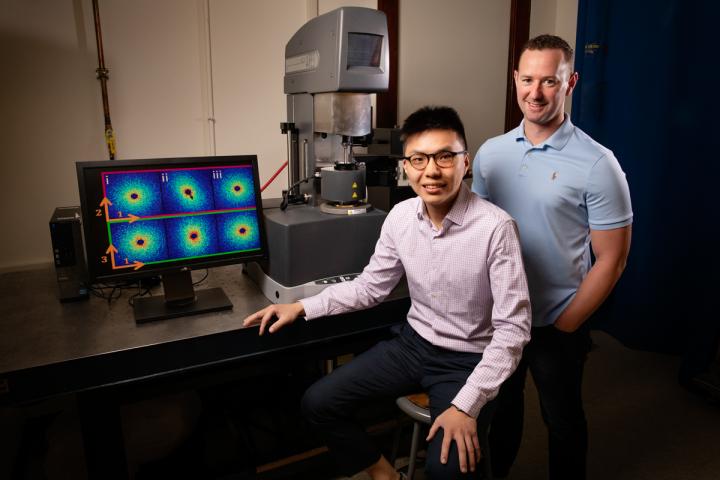
Credit: Photo by L. Brian Stauffer
CHAMPAIGN, Ill. — Before designing the next generation of soft materials, researchers must first understand how they behave during rapidly changing deformation. In a new study, researchers challenged previous assumptions regarding polymer behavior with newly developed laboratory techniques that measure polymer flow at the molecular level.
This approach may lead to the design of new biomedical, industrial and environmental applications – from polymers that aid in blood clotting to materials that more efficiently extract oil and gas from wells.
The findings are published in the journal Physical Review Letters.
Understanding the mechanics of how materials molecularly react to changing flows is critical to developing high-quality materials, the researchers said, and defining a framework for interpreting and describing these properties has eluded scientists for decades.
“When polymeric materials – synthetic or biologic – are deformed, they react at both macroscopic and molecular scales,” said Simon Rogers, a University of Illinois chemical and biomolecular engineering professor and lead author of the new study. “The relationship between the two scales of response is complex and has been, until now, difficult to describe.”
Previous studies have attempted to characterize the relationship between the microscopic and macroscopic behaviors of polymer deformation mathematically, the researchers said, but have been unable to relate the physics to any well-defined microstructural observations.
“In our study, we wanted to measure both the structural and mechanical properties of polymers during deformation, directly shedding light on the origin of unique mechanical properties,” said Johnny Ching-Wei Lee, a graduate student and study co-author. “We thought perhaps it was best to try and use direct observations to explain the complex physics.”
In the lab, the researchers simultaneously measured multiscale deformations by combining traditional tools for measuring stress and deformation at the macroscopic level with a technique called neutron scattering to observe the structure at the molecular scale.
The team found something unexpected.
“With simultaneous neutron scattering and flow measurements, we are able to directly correlate structure and mechanical properties with a time resolution on the order of milliseconds, ” said study co-author Katie Weigandt, a researcher from the National Institute of Standards and Technology Center for Neutron Science. “This approach has led to fundamental understanding in a wide range of nanostructured complex fluids, and in this work, validates new approaches to making polymer flow measurements. ”
“Previous research had assumed that the amount of applied deformation at the macroscale is what soft materials experience at the microscale,” Lee said. “But the neutron-scattering data from our study clearly shows that it is the deformation that can be recovered that matters because it dictates the whole response, in terms of macroscopic flow – something that was previously unknown.”
The researchers said this development will help rectify several poorly understood phenomena in polymers research, such as why polymers expand during three-dimensional printing processes.
“We have come up with what we call a structure-property-processing relationship,” Rogers said. “This subtle, yet fundamentally different way of thinking about the polymer behavior summarizes what we see as a simple and beautiful relationship that we expect to be quite impactful.”
The research brings key insights to the long-standing challenge in soft condensed matter, and the team said the established structure-property-processing relationships could provide a new design criterion for soft materials.
###
Katie M. Weigandt and Elizabeth G. Kelley of the Center for Neutron Research at the National Institute of Standards and Technology also contributed to the study.
The National Science Foundation supported the research.
Editor’s notes:
To reach Simon Rogers, call (217) 333-0020; [email protected]
The paper “Structure-property relationships via recovery rheology in viscoelastic materials” is available online and from the U. of I. News Bureau.
DOI: 10.1103/PhysRevLett.122.248003
Media Contact
Lois Yoksoulian
[email protected]
Original Source
https:/
Related Journal Article
http://dx.




